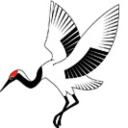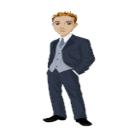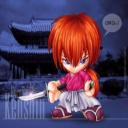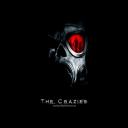Yahoo Answers is shutting down on May 4th, 2021 (Eastern Time) and beginning April 20th, 2021 (Eastern Time) the Yahoo Answers website will be in read-only mode. There will be no changes to other Yahoo properties or services, or your Yahoo account. You can find more information about the Yahoo Answers shutdown and how to download your data on this help page.
Trending News
Karate Style Questions?
I have to admit that I've had a minor bias against karate but I'm trying to change that. It is mainly due to all the McDojos that teach karate, I know that certain styles of karate are very brutal and effective, but the only real examples that I have are of McDojos. I would like you to broaden my understanding of the different styles and tell me how they are different. Examples (spelled wrong) Kempo, Kyokashin, Goju Ryu, and so on. Thanks.
You guys are right, this question would take too long to answer. I'm currently researching the facts about the main styles. I'm gonna change my question to which style do you prefer?
12 Answers
- JayLv 71 decade agoFavorite Answer
Ultimately the difference between styles is kata, theology and training. Other than those I think that there's just subtle difference from there on.
One of the biggest factors in traditional Okinawan Karate is it's Hojo Undo, or supplementary training. This where you condition and harden your body. There are people who've achieved a feat of breaking several inches of pine with their fingers or big toe.
http://www.youtube.com/watch?v=gzLRFyOAPy8
http://www.youtube.com/watch?v=Ep2rovVDZYI
Chojun Miyagi, founder of Goju Ryu, said this about Hojo Undo: "Supplementary exercises, Hojo Undo, are practiced with the aim of perfecting the kata. The purpose of these exercises is not only to develop strength and power in the body as a whole, but to develop each part of the body individually in order to develop complete body power." In other words even being able to do these things are meaningless unless it's for the kata.
Anything and everything is within the kata. Most drills practiced are pieces from a kata. Everything you do is to perfect the kata. It truly is the backbone of traditional martial arts, not just Okinawan Karate. This goes back even to Shaolin in the way they trained for and in the forms. Any variance in the style is the variance in the forms they practice.
EDIT
As for what style I prefer: I prefer Goju Ryu, though it wasn't the first form of Karate I studied. I first learned Shotokan which was, you could say, the primary style I took just with Chung Do Kwan Taekwondo mixed in, though it held stronger to being called Taekwondo due to the tournament connections. It was ultimately Shotokan now that I've looked at other Shotokan schools and their curriculum and especially Kata. I don't know how I missed it for so long.
Goju Ryu I favor because of it's style of fighting and it's methods in Hojo Undo. It's something I instantly connected with and it just stayed with me.
- YmirLv 61 decade ago
Determine the power mechanics of the style using demonstrations. If you can be knocked back about 5 feet from a 3 inch shift in motion, then the style has power generation.
Normally, internal arts have specific advantages over external arts on this matter.
Rate efficiency in the amount of time it takes to take down one character, according to theory. Are they training you to decrease the time to take down an attacker, as you progress, or do you see your time being more or less the same (multiple punches or hits) with only your form and speed increasing?
Regardless of what style they call themselves, the component you necessarily must worry about is the humans teaching it. Styles come from human hands and minds. And it is they who decide what to do with them. Thus regardless of the style, you can have a bad teacher. A bad student. A good student or a good teacher.
Lacking experience, though, you will not easily be able to differentiate between truth and fiction. That's part of the philosophy part.
Generally speaking, the kata of a style hides various applications and muscle training tools. If you are training in techniques that aren't part of the physical motion of your kata, that is a sign that there's an inconsistency at work.
Fundamentally, form over function is something you will often see in McDojos. Instead of focusing on the application and the results, the focus is on the form. But the form is useless without the function, so the form starts looking bad as well. In the end, you get junk. Neither good form, nor good function.
Relatively speaking, you want to check for the inclusion of both direct line attacks and attacks that rotate in a circle. The more direct line attacks there are, the harder the style generally is. The more indirect attacks, the softer the style is in techniques. Hopefully you can judge, even now, how effective they are when they are used on you. Use your body to judge, not the mind.
The thing is, Martial Arts dojos start you on the basics. The fundamentals are true for all things leading into the future. The basics are only for beginners. So it's hard to see much staring up at the MA hierarchy from the bottom rung of the ladder. And there are historical reasons why this is so. (Dojos got infiltrated often by people who wanted to steal techniques to use in killing the dojo master and practitioners)
In the modern day of America, that's not too much of a worry. The tradition still tends to hold in the hierarchy and teacher-student relationship though.
- mafundhelperLv 51 decade ago
This is not the best place to get such detailed information. I suggest that you take some time and surf thru Youtube and see what you can find. Now, it won't really make sense just watching it, but at the same time, there will definitely be times where you will have to nod your head and say, "Yeah, that looks okay..." IF someone with a bias and no understanding of that art (not martial arts in general, you might be very knowledgeable, who knows) can see some value, there is probably much more beneath the surface.
Otherwise, the best is to ask more specific questions. For example, you could ask...
Does karate include grappling?
How would a typical karate practitioner respond to a double leg take down?
Why do we never see haymaker punches in karate practice? How do they deal with a haymaker?
And so on...
Good luck!
Source(s): Teaching karate since 1988 - 1 decade ago
My personal preference is Enshin Karate, an off-shoot of Kyokushin. Where as Kyokushin takes a straight-forward approach (i.e. moving straight ahead at an opponent, matching power with power), Enshin Karate utilizes the "tai sabaki" concept, which is turning your opponents power against them, to great effect. What I really like about this style is that it's strategies can be attributed onto my own boxing and kickboxing training. I grasp the concept of "sabaki" extremely well because it's techniques parallel ones I already know and practice constantly (i.e. parrying to the outside of the opponent's attacking hand while making a pivoting step to their "blind side").
- How do you think about the answers? You can sign in to vote the answer.
- pugpaws2Lv 71 decade ago
Basically, you are asking for opinions which vary from one person to another. All opinions are based on, what you know, what you think you know, and things that you don;t know that you don't know.
Your description said, "I know that certain styles of karate are very brutal and effective, ......". That is your first misconception. A style (any style) is like a gun. It can't think or act on its own. It is effective only if used. how effective, brutal, or violent is totally dependent on the user. Martial arts styles are not brutal, people are. The person determines just how effective and brutal he is, not the art he does. Last time I checked, people are in control of the martial arts they do. The martial art does not control them. Everything starts in the mind of the user. He chooses to act or not. He chooses how violent he will be. It is not the style that determines if an art is a good one or a McDojo. it is the instructor, and what he teaches. If he is a bad instructor or waters down what he teaches, it will greatly effect the effectiveness of the students. Lest get past the style vs. style and realize that it is the person, the quality of his training, and how he choose to use it.
...
Source(s): Martial arts training and research over 43 years (since 1967). Teaching martial arts since 1973. - KokoroLv 71 decade ago
that would take a book, for each style and there are over 50 styles of karate and another 50 of kobudo
the simplest explanation is to look at each styles kata, each style is defined by there kata, it is in short the manual for your style.
although not the best source of info it this gives you a very ruff idea there are a few inaccurate
http://en.wikipedia.org/wiki/Comparison_of_karate_...
edit, here is a very brief description of the major ones
Karate (the way of the empty hand) (Japanese, Okinawan). Modern karate can be considered a combination of various kung fu styles and to-de jutsu. consisting of grappling (throws, locks, traps, etc), strikes and blocks, the major styles include.
Shotokan is both a hard and soft style. emphasizes long, deep stances, lunging, impact maneuvers, long and mid range fighting, some joint locks and throws.
Goju-Ryu: close-ranged fighting system that uses open-hand blocking and grasping motions, and short-ranged strikes. Both a hard and soft style.
Isshin Ryu is both hard and soft, predominantly a hard style and close range fighting
Wado-Ryu: combination of Shotokan and Japanese Jujutsu, there are far more joint locks, sweeps, and throws taught on a regular basis. Stances are shorter and more upright than Shotokan.
Shito-Ryu. Is both a hard and soft style, mid range to long range fighting kind of a cross between Goju-Ryu and Shotokan, taking the kata from both. But is a closer-ranged than Shotokan
Source(s): 30+yrs ma - clown(s) aroundLv 61 decade ago
It is cool that you want to broaden your horizons. But there are so many types of Karate. We have great users here that could write such books but in one answer that is to much. Try looking into one or two styles and then asking about them. But asking for a comprehensive answer on so many of them right here right now would do you no good.
Good Luck :D
- Anonymous4 years ago
Personally I like guys with reduced hair. I don't mind it being a little long like 3-4 inches (maybe a little longer) as lengthy as it's styled in a very good way.
- 1 decade ago
Kyokushin is a style of stand-up, full contact karate and is the most aggressive form of karate.
Source(s): me - Darth ScandalousLv 71 decade ago
To answer your question the way you are asking for it to be answered, would take a lot of writing. That's a serious task.
For you to get a satisfactory answer you need to do some Googling.
Wikipedia is not a reliable source.
Do your searches according to arts, then styles.
If you are serious about knowing this, you will do this.







